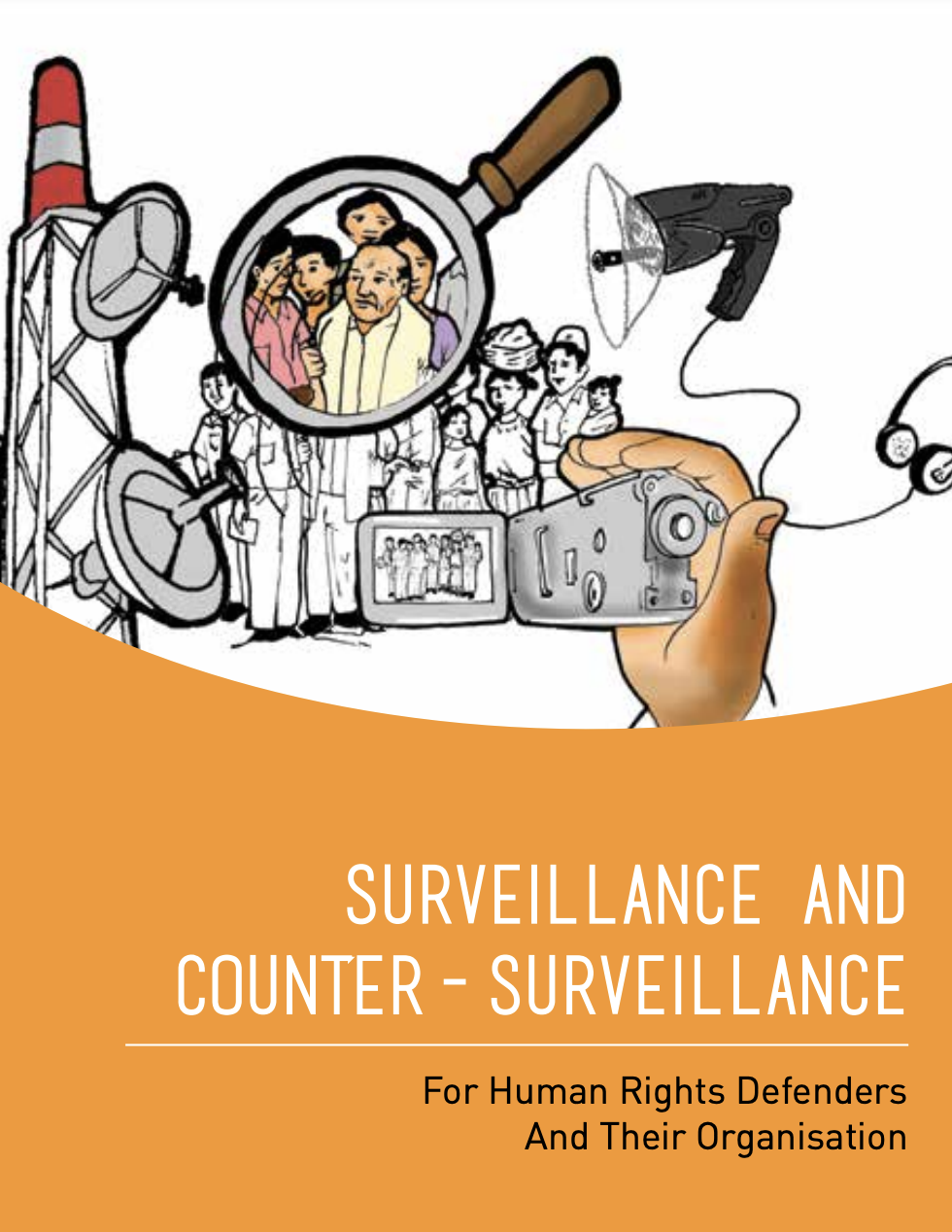
Protection Journal # 1: La experiencia del Comité Pro Seguridad y Desarrollo de Santiago Atitlan (Available in Spanish, click on the image below to download)
This Protection Journal tells the story of the municipality of Santiago Atitilán during the internal armed conflict and the events that led to the creation of the Committee. In January 1991 until the last years of the first decade of the 2000’s, the municipality suffered its most violent period. Since the signing of the Peace Accords, Santiago Atitlán has been revisiting its citizen action plans in order to deal with this problem that haunts the country.
This manual exemplifies and explains the struggle of people who became human rights defenders after the Panabaj massacre and their effort in controlling the violence unleashed, first by military personnel and then by criminals after the signing of the Peace Accords.
Protection Journal # 2: Surveillance and Counter-Surveillance for Human Rights Defenders Organizations (Available in English and Spanish, click on the images below to download)
Being a person who assumes the responsibility of defending rights of others is no easy task. Unfortunately, in many cases human rights are at odds with the private interests of powerful actors who will not hesitate to turn violent. Human rights defenders remind us that human rights must not be violated, that the collective standards of co-existence are above private profit at any cost. Many defenders suffer aggressions and persecution, including surveillance to keep them under control and to prepare attacks (aggressions) against them.
This booklet aims to provide human rights defenders and their organisations with tools to check and curtail such practices: by engaging in counter-surveillance one can make it more difficult for aggressors to attack so that your security will improve and you can continue with defending human rights safely.
Protection Journal # 3: Human Rights Defenders at High Risk, Security Considerations for their Families and Personal Lives (Available in English and Spanish, click on the images below to download)
This journal deals with the protection measures that defenders can use in their life and their family.
This journal number 3, produced by UDEFEGUA and Protection International contains suggestions on personal security measures for human rights defenders (HRDs) at high risk as tools for their protection against events, threats or aggression in their private lives.
For the purpose of this handbook, security measures are defined as preventive actions or rules to help avoid or minimise the effects of acts that negatively impact or injure people and their property.
Taking such measures aims at preventing or minimising the negative consequences of potential aggressions on HRDs’ homes, families, neighbourhoods or communities. The measures outlined in the handbook aim at guiding HRDs in aspects to consider when seeking to improve the security of their private lives including that of their familes. It is recommended that a HRD to undertake a risk assessment with their family or a specialised organisation to identify security measures that effectively minimise the risks identified.
Protection Journal # 4: Protecting your life, my life, our lives (Available in English and Spanish, click the images below to download)
This journal is dedicated to the defenders. It focuses on the work and the protection of women human rights defenders and is the fruit of reflections and testimonies that they have shared with us over the years.
Women who defend human rights face much greater burdens in comparison to their male colleagues. In addition to dealing with the multiple human rights abuses that are the motivation for their work, women defenders have to also confront the abuses and pressures that our profoundly sexist and patriarchal societies impose against women who raise their voices. What’s worse is that, in many cases, this discrimination and these abuses, directly and indirectly, come from male human rights defenders themselves.
For all these reasons, the clear and critical content of this Manual is even more necessary. We have an enormous challenge: to develop a critical and reflexive gaze towards ourselves, a gaze which must drive us towards clear and decisive action to both recognise and overcome this challenge. We hope that this new Manual will be at least a small step on this long road that we all have to travel.